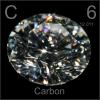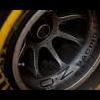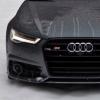Search the Community
Showing results for tags 'Quattro'.
-
Based on the Porsche Taycan, the Audi has a character all its own (and it might even be more fun). At the 2018 Los Angeles Auto Show (a time when we could all still gather around a car and discuss it clearly without masks), Audi unveiled an EV prototype that was a huge success. The name? The Audi E-Tron GT Concept. After two-plus years of waiting, the automaker is ready to debut the production-ready 2022 Audi E-Tron GT, arriving on our roads with only minor alterations from its concept predecessor. A few weeks after its official presentation, we were able to take the wheel of the model for two short hours in Reims, France, for a very preliminary "first taste," stoking our appetites for a more complete drive in the coming weeks. This was an opportunity to get a closer look at the famous platform-mate of the Porsche Taycan and to check whether the E-Tron GT upholds Audi's claim that it is indeed a different animal than its cousin from Stuttgart. Love At First Sight? Instantly, the Audi E-Tron GT wows onlookers with its spectacular design and unusual details. Although it looks much more imposing than the Taycan 4S, the two actually share the same footprint, with an identical 114.2-inch wheelbase and only marginal length and width differences – the Taycan 4S spans 195.4 inches long and 84.4 inches wide, while the Euro-spec E-Tron is up inch between the bumpers and 0.6-inch between the mirrors. But while Porsche comparisons are inevitable, it also must be said that the E-Tron is also far more dynamic-looking than the similarly sized S7 Sportback, thanks to a 0.2-inch-lower roofline and some incremental length and width increases. Customers in this type of segment are all but guaranteed to respond positively to the E-Tron GT's stance, and the wind will love it too, thanks to a drag coefficient of 0.24 (slightly up on the smoother Taycan's 0.22). Like the exterior, the cabin is no mere copy-paste of the Porsche EV, but a bona fide Audi interior. While the Taycan features up to four interior screens, the E-Tron GT makes do with two – a 12.3-inch Audi Virtual Cockpit instrument cluster and a 10.1-inch infotainment system. For our part, we find it more ergonomic, thanks in particular to the presence of physical buttons for certain shortcuts. On the other hand, as in the Taycan, we still feel a bit overwhelmed, and our tester wasn't even equipped with the optional MMI Touch secondary center display. The 2022 Audi E-Tron GT also isn't the best in terms of interior roominess, with fairly cramped rear seats. And thanks to a fairly prominent door sill (a function of the floor-mounted batteries), you'll have to contort yourself to get in. At the very least, luggage space shouldn't be an issue. This European-market E-Tron GT features a 405-liter cargo area under the rear hatch and an 81-liter frunk – that converts to 14.3 cubic feet and 2.9 cubic feet respectively, though those numbers don't necessarily correspond to official US-market measuring standards. The 2022 Audi E-Tron GT, By The Numbers This sporty (but not too sporty, since there's an RS version coming) EV has two electric motors; one mounted on the front axle makes 235 horsepower on its own, while the rear motor produces 429. Between the two, the E-Tron GT reins in 469 ponies, with a total of 464 pound-feet as well. Also, an occasional-use "overboost" function frees up 522 hp and 472 lb-ft, useful for quick passes or stoplight getaways. Audi claims a 60-mile-per-hour sprint of 3.9 seconds and a top speed of 152 mph. Like the Taycan but unlike some other EVs, the E-Tron GT has a two-speed gearbox, allowing for faster response across a wider speed range. What's more, a rear differential lock allows for better grip when exiting corners or encountering bad weather. Notably, the Audi's powertrain corresponds more closely to that of the Taycan 4S with Performance Battery Plus, eclipsing both the standard Taycan 4S and the base Taycan in terms of power and speed. Porsche won't release its grip on flagship performance though; both the Taycan Turbo and Turbo S outpace the forthcoming Audi RS E-Tron GT. As far as charging is concerned, Audi claims that taking the battery from 5 percent to 80 percent will take 22.5 minutes with a maximum charging power of 270 kW. It will take about nine hours on a standard home charging outlet to go from 0 to 100 percent. On the battery side, we have an 800-volt system, not a 400-volt system, which allows for a more consistent distribution of performance. Comprised of 33 separate modules with 12 cells each, the battery contains 396 cells for a total capacity of 93.4 kilowatt-hours. Each module has an internal control unit to manage voltage and temperature. Integrated into the cooling circuit of the car via a heat pump, the battery can be cooled or heated to be perpetually within an ideal temperature window, minimizing range degradation and prolonging battery life. Is It Really An Audi? Audi claims an EPA-rated range of 238 miles, and fortunately, after two hours of driving and one hour of photography, we didn't come close to depleting the battery. Of course, such a short drive cycle isn't enough to really evaluate the E-Tron GT's range claims (we'll need much more time for that), so we chose to spend most of our time concentrating on the EV's dynamics and driving behavior. From the very first spin, we expected the E-Tron to be a perfect copy of Porsche's Taycan, which would have been a great outcome for the firm with four rings. But we should have listened to the company representatives when they said that the Audi takes Porsche's underpinnings, but applies a different philosophy to them. You can feel within the first few blocks that, true to its name, the E-Tron is more of a GT car, with a softer suspension and more subtly tuned steering. That's not enough to make it a "soft" car, though – quite the opposite, with 469 hp to play with, the Audi is plenty fast. But while the Taycan absolutely crushes you against your seat, the E-Tron GT is a bit more docile, with less violent acceleration. That doesn't stop it from offering the driver a dynamic experience, and it's still very fun to drive. The two-speed gearing is good, and dynamic behavior is better. Thanks to some weather during our test drive, the road was particularly greasy. We weren't concerned, because if the E-Tron GT was as grounded as a Taycan, only the laws of physics could stop our enthusiasm. The tires play a key role here too, obviously. With Goodyear Eagle F1 rubber, our Audi E-Tron GT Quattro could quickly turn into a dancer, especially during overly ambitious acceleration at the exit of a curve that could result in some delightful, controllable oversteer. Not since the mid-engined R8 RWD has an Audi felt so sporty and playful. Even more surprising, the E-Tron GT is particularly fun on twisty roads, more so than a base Porsche Taycan, which will prefer to play the efficiency card. The Audi's steering is less incisive and its suspension is softer, but the result is, possibly paradoxically, more frisky and enjoyable. And all this without breaking your lumbar vertebrae at the slightest bump. That may be the mark of a true GT car – comfortable over long distances, without sacrificing the joy of making good time over a twisty, undulating road. Of course, it's hard to argue with the laws of physics too much when piloting more than 5,000 pounds of European-market EV around. Audi does its best to defeat Newton, employing rear-axle steering, an Audi Sport setting for the rear differential, and E-Quattro all-wheel drive that can power the car in rear-drive-only mode. But all that mass translates into a lot of inertia, so anticipating the road ahead is crucial. Our 2,290-kilogram (5,048-pound) test car can quickly take you where you don't want to go if you get overly ambitious. Especially since the E-Tron's braking is not what delighted us most. While the Audi RS E-Tron GT comes standard with tungsten carbide–treated brakes with 16.3-inch rotors and 10-piston calipers at the front (brakes that were introduced at Porsche some time ago), our standard Quattro version had 14.1-inch steel brake discs and six-piston calipers. Those seemingly massive brakes feel slightly undersized for such a heavy car (for sporting use, at least). Not to be catastrophic, they were adequate for most situations. Another grievance, inherent in virtually all electric cars, is the transition from regenerative braking to friction braking. The "conventional" braking system is only called upon beyond a deceleration of more than 0.39 g. This is a very complex operation, so as a result, little happens at the beginning of the pedal stroke until hydraulic braking comes into action and suddenly grips the discs. At first, it's very surprising behavior, and the lack of progressiveness hinders dynamic driving. Counting Pennies Pricing for the US-market 2022 Audi E-Tron GT hasn't been completely sussed out just yet, but we know that the base Quattro will start at $99,900 plus $1,095 for destination. The France-spec car we drove was very well equipped, with a 100,500-euro starting price bolstered by a 5,400-euro Dynamic package (Quattro differential on the rear axle, steerable rear wheels, and adaptive air suspension) and 4,600-euro carbon fiber roof – which might not be essential, since the standard E-Tron GT's center of gravity is already lower than that of the R8 supercar. Brake-wise, those aforementioned tungsten-coated discs cost an additional 4,150 euros, and they're much more suitable for dynamic use. And if steel really doesn't suit you, Audi still offers ceramic brakes as an option at 10,500 euros, but they make more sense on the high-performance RS E-Tron GT than on the less aggressive Quattro model. If you really want maximum Audi EV performance, you'll have to get in line for that RS model. With a starting price of $139,900 in the US, the RS E-Tron GT gets 590 hp (or 637 hp on overboost) and 612 lb-ft, good for a 60-mph sprint of 3.1 seconds and a top speed of 155 mph. The RS also comes standard with a carbon fiber roof, rear-axle steering, and the sport differential, making it an easier sell to those who might option the standard Quattro with those features. The E-Tron GT is built at Audi's Böllinger Höfe plant in Neckarsulm, Germany – the same facility as the R8. The first customer deliveries of the Audi EV, including the higher-performance RS version, will commence this summer in the US. Specific option pricing and packaging will be revealed closer to that nebulous on-sale date, but Audi will offer the E-Tron in $99,900 Premium Plus and $107,100 Prestige forms, with the RS E-Tron sold in a single top-dog trim level. Those prices compare favorably to the Porsche EVs: the $79,900 Taycan rear-drive, $103,800 Taycan 4S, $109,370 Taycan 4S with Performance Battery Plus, $150,900 Taycan Turbo, and $185,000 Taycan Turbo S.
-
First official photos of the new luxurious sport crossover from Ingolstadt, Germany. Stay tuned for more updates...
- 36 replies
-
- 10
-

-
Here's the new Audi TT. The third-generation of Audi's two-seat sports car made its debut under the lights at Volkswagen's all-encompassing Group Night. Drawing inspiration from both the original TT and the Audi Sport Quattro Concept, the new TT is more of an evolution of the second-generation's look, wearing the same basic shape. The rear is reminiscent of the first TT, with the rounded look of the fenders and taillights meeting with the roofline to offer a stylish form factor that's accented by a subtle set of twin exhausts. As with the gen-two car, that sloping rear hides a spoiler that deploys automatically at 75 miles per hour. The front, meanwhile, with its sculpted grille and headlights, reminds us quite forcibly of Audi's heritage-inspired concepts, the Quattro and the aforementioned Sport Quattro. Under hood, there will be three powertrains available. The base is a 2.0-liter, TDI four-cylinder with standard stop-start that churns out 184 horsepower and 280 pound-feet of torque, all while returning in a hugely impressive 56 miles per gallon. It'll hit 100km/h in a reasonable 7.2 seconds. The TT with the TDI mill is only available with front-wheel drive. The two engines we're most likely to see stateside are variations of Audi's popular 2.0-liter, turbocharged four-cylinder. The base engine delivers 230hp and 272lb-feet of torque, which can be delivered through either a 6-speed manual to the front wheels or through a 6-speed dual-clutch S-Tronic to a Quattro all-wheel-drive system. As with the TDI option, the past several years of TT indicate that we shouldn't count on a FWD, manual-trans model. Equipped with the 6MT, drivers can expect to hit 100km/h in 6 seconds, while the DCT/Quattro model can get there in a scant 5.3. Both cars are limited to 250km/h. For those with a heavier foot, Audi's second-generation TTS should fill the bill, offering up 310hp and 280lb-ft of torque from its 2.0T. A six-speed manual will be available as standard (again, probably not for the US) while a six-speed S-tronic will also be available. 100km/h arrives in just 4.7 seconds, meaning it's just 0.6 seconds slower than the limited-run TTRS.
- 7 comments
-
- audi ttaudi
- 2 seater
-
(and 4 more)
Tagged with:
-
[ Unlike the Italians, Germans are more eloquent in their art of disguise. This, particularly in the way their performance cars are made. Ferraris and Lamborghinis scream supercar with their vivid, attention catching colours, while the Merc AMGs, BMW Ms and Audi RSes are quick to have you mistake them for just another motoring staple. And here, we may have another example of a wolf in sheep's skin. On the outside, nothing quite separate this A6 Avant from its tamer siblings. The usual suspects are absent - no range-topping 'RS' kit or badge. What it has though, are adequately sporty S-line dressings. And a set of 20-inch rims - which does not look overtly large in those wheel arches. Here comes the exciting part. A 3.0-litre bi-turbo V6 diesel engine, giving the A6 Avant enough power to dish out the century sprint in 5.3 seconds. That's about just half a second slower than the RS4. Then there's the chunky 650Nm of torque, which makes driving in our urban landscape a breeze. The Avant (Audi's speak for wagon) has become an icon in the world of automotive shapes. And we reckon it just adds to the uniqueness of the car's overall preposition.
-

Did Audi take two steps backwards just to go forward with the A8's design?
Akram_saheed posted a blog entry in MyAutoBlog
Here is the 2014 Audi A8 facelift which, despite possessing some impressive technology, looks like an offering from the early 90s. It's sharp, boxy and bland. Compared to the all new S-Class or the 7 Series, the A8 looks really boring, although the MatrixBeam LED headlights are pretty impressive. The facelifted A8 comes from the same automaker that brought us sexy machines like the Quattro concept, the RSQ, R8, RS5 and so on. It actually looks like a rejected design piece from Bentley, to be honest. Or perhaps Audi had to tone down its design just so the Bentleys could look more 'exclusive'. Built around the lightweight aluminium Audi Space Frame, the A8 has been finessed by subtle resculpting of the bonnet, the single frame grille, the front bumper and the lower edge of the headlight units. At the rear, the design of the LED taillights have been revised and the bumpers in all models - except the S8 - incorporate two rhomboid tail pipes. New chrome elements, new high gloss black window surrounds and five new colours also mark out the updated car. Measuring 5,140mm in length, sitting 1,950mm wide and standing 1,460mm tall with a 2,990mm wheelbase - the A8 remains unchanged, while the 'stretched' model provides better rear leg room thanks to a 130mm extended wheelbase. The A8 can be powered by one of seven petrol and TDI engines, the majority of which have been revised to improve performance and efficiency. The supercharged 3.0-litre TFSI is boosted to 305bhp, while the twin-turbo 4.0-litre TFSI V8 has 429bhp. The 3.0-litre and 4.2-litre TDI oil burners, have 254bhp and 379bhp respectively. Paired with the renowned quattro all-wheel drive system, the 4.0-litre TFSI now throws the A8 from nought to 100km/h in a brisk 4.5 seconds. The power units in the facelifted A8 is not all about the Frank Martin pleasing performance though. When applicable, the Audi Cylinder-On-Demand (COD) system deactivates four of its eight cylinders to give priority to fuel economy. The most efficient diesel engine is the 3.0-litre TDI, which returns up to 20.36km/L, corresponding to 155g/km of CO2. The luxuriously equipped Audi A8 L W12 quattro is the range topper among the A8 lineup. The lightweight 6.3-litre power unit produces 493bhp. It boasts the best in-class combined fuel consumption of 10.2km/L, corresponding to 270g/km of CO2 emissions. The respectable efficiency rating is due in part to a newly adopted version of the COD system, which can deactivate the fuel injection and ignition for six cylinders. Meanwhile, the 512bhp capable S8 is powered by a 4.0-litre TFSI engine that propels the sports saloon from nought to 100km/h in 4.2 seconds. Equipped with the same COD technology, the S8 is capable of returning up to 11.9km/L and 235g/km of CO2 emissions. All A8 models are equipped with an eight-speed tiptronic automatic transmission which transmits power to all four wheels via the quattro permanent all-wheel drive system in all six, eight and twelve-cylinder versions. The new Audi A8 is expected to reach customers here next year. Audi A8 Audi A8 L Audi S8 -
In 2011, Audi presented the Quattro Concept, the final production version of which has yet to come. But now, it seems that the German automaker is finally ready to take the wraps off the final production version when the 1984 Audi Sport Quattro celebrates its 30th anniversary. Rumour has it that the final version will look sportier as well as sharper than the Quattro Concept. It's also said that the final version of the car will carry a twin-turbo 4.0-litre V8 engine. Capable of producing a total power output of 650bhp, the car will seemingly take only 3.4 seconds to go from 0-100km/h. The Quattro Concept, however, had to count on a turbocharged 2.5-litre five-cylinder engine with a total power output of 408bhp. In addition to a powerful V8 engine, the successor to the Audi Sport Quattro will also feature a sports tuned suspension with adaptive dampers, a sports Quattro rear differential, and carbon-ceramic brakes. To keep things light, Audi will be using such components as aluminium, magnesium, and carbon fiber reinforced plastic (CFRP). In total, the car won't weigh over 1,300kg. If you are keen on seeing the car with your very own eyes, you may want to anticipate the upcoming Frankfurt Motor Show as the German automaker is likely to show it there. And, if all the rumoured specifications turn out to be true in the end, expect to see a price tag of around
-
- new model
- new technology
- (and 16 more)
-
Bros, Just to seek some opinion here... I am having the thoughts of changing to a cabrio, and in fact have been having this thoughts for a while. Between the A5 Quattro Cabrio and 323i cabrio, which do you think is better? Both are from PI. I got the pricing from Auto Sportique. They are offering me $174k for the A5 and $173k for the 323i. And anyone has any negative or positive experience from Auto Sportique? Thanks for your feedback. Cheers...
-
Used car prices for these 2 models are around the same region. Without considering the higher road tax for the 3.2L, which one would you get in terms of performance, luxury, smoothness and comfort. Of course the 2.0TFSI can be MTM tuned to produce high bhp but let's assume that both are stock, and that i am not looking to modify either model. Which would you get?
-
Although Audi is busy with the introduction of its 2012 A4 Allroad model at the 2012 Detroit Motor Show, they have something up their sleeve. And that is the 2013 Audi A6 Allroad which they have announced just recently in Germany. Looks like the Audi A4 Allroad will get a big brother. Audi has adopted its Allroad recipe for the A6 by taking the A6 Avant and making it ready for the urban jungle. If you were to really compare the A6 Avant with the A6 Allroad, the Avant is a sleeker-looking vehicle and the Allroad is more suited for some rough and tough driving. Firstly, the Allroad
-
[extract] Lately, several automakers has showcased or reported that they will be producing a smaller version of their current models. For example, Porsche revealed a smaller version of the Panamera and Cayenne, Mercedes Benz came up with a plan to release the
-
Audi stunned us at the recent Paris Motor Show when it unveiled the Quattro concept , which pays homage to the original Quattro that pioneered the automaker's now signature all-wheel-drive system. It shares its underpinnings with those found on the hot RS5 coupe, packing 408 horsepower and weighs less than 3,000 pounds. For those who dreamt of a production version, that dream may become a reality according to Autocar. Audi has reportedly been advancing plans for a limited production run of the Quattro, assembled on a dedicated line at parent company Volkswagen's newly acquired design firm, Italdesign. Stefan Reil, head of development at Audi's Quattro Gmbh division, told Autocar that the automaker is "rethinking standard processes to make it possible," and that Audi "know how to engineer it already." If the Quattro concept gets the green light, power would likely come from a tuned version of the turbocharged 2.5-liter inline-five found in the TT RS, producing somewhere around 350 horsepower. Although It's not the 408 hp unit that Audi originally quoted, if the sub-3,000-pound weight is kept in order, it should still make for one heck of an interesting performer.
- 3 comments
-
- quattro
- all wheel drive
-
(and 3 more)
Tagged with:
-

Audi Concept quattro at the Paris Motor Show, and some thoughts about it
Rigval posted a blog entry in MyAutoBlog
Audi have come up with a quattro Concept car celebrating the 30th anniversary of the original Audi quattro. The Ur-quattro, the first production Audi with all-wheel drive and most importantly the first rally car that took advantage of the regulations allowing all-wheel drive to be used mainly in the World Rally Championship. This car managed to win a whole lot of races and championships, both in Group A form and the more radical Group B form. Short, stubby wheelbase and all. Now, Audi have come up with a concept car based on the principles of the Ur-quattro and I hope that this enters production. What I remember about the original Audi quattro was that it was a 2 door hatchback coupe that had those flared wheelarches, a 5 cylinder turbocharged engine that had a very distinctive sound and then, in Sport quattro form, the shortest, most unstable looking rally monster that looked more at home going sideways than in any other angle. It was magical. Then again any Audi quattro was good to look at. It was the car that started flared arches. This was the first car to use this kind of flares. This arches was used by the Lancia Delta Integrale and in fact the GD Series Subaru Impreza recently. So two other rally cars also owe a whole lot to the Ur-quattro. Anyway, a 2 door hatchback coupe with flared arches and that 5 cylinder warble is what makes a quattro. For me that is. And with this concept car Audi has not strayed away for this basic path. If fact I wouldn't like it if they did stray as these days they've actually been so far removed from the original in the first place. The new RS models have V8s, V6s but no 5 cylinder warble. The B7 RS4 had an engine note to die for, but a 2 door coupe with a V8 is stunning, but no rally bomber. Try imagining driving an RS5 through the snow or dirt doing powerslides in that huge coupe. It has to be an Audi quattro from 1980, last produced in 1991. Eleven years is a long time for a car. But it was actually so far advanced that it could stay in production for more than a decade. The Concept quattro uses the current RS5 as a starting point. It has a shorter wheelbase (2600mm instead of 2750mm), 40mm of the roof lopped off and only weighs 1,300kg. Not a portly 1610kg of the RS5 or 1500kg TT RS which is almost the same size and length as this concept car. This was achieved by the cutting of height and length and also the liberal use of aluminium (mainly the suspension) and carbon (for most removable body panels like the spoiler,bonnet, boot and trim). There are also no rear seats. Only space for a helmet and some luggage. The Concept quattro uses a 2.5liter 5 cylinder engine that makes 408bhp and 480Nm. It runs through a 6 speed manual gearbox and of course all-wheel drive. This enables the concept car to make 100km/h from a standstill in about 3.9seconds yet sip 8.5liters of fuel per 100km, even on those large 20inch wheels. Pretty decent figures for a 2.5liter engined car. This is partly down to the lightweight. The car also sports center locking hubs that hide 6-pot calipers that grip on carbon ceramic discs. Of course, this being a concept car a lot of this are very expensive parts and may not make it into production. Audi wants us to notice the similarities of this concept and the Ur-quattro. I suppose there are some similarities, engine, coupe body and all. In fact, the sketch below also shows the Concept quattro with the short wheelbase Sport quattro. But the car somehow looks too rounded and not tonka toy chunky enough in looks. I suppose its the similarity to the current design philosophy that likes that coke bottle waistline and slightly bulbous looks. It looks best (like an original quattro modernized) when viewed directly from the side. The front has a gap that is so big that small children may be scared by it. It's still all grille if you know what I mean. And now we also have LED lights (even the headlights) everywhere (front and rear). So the car is more bling with bright lights, especially those show off daytime driving lights, that huge Nuvolari concept type grille, sexy curves at its flanks rather than a butch, squared off type of coupe. No complaints about the interior though. Typical Audi, meaning very, very well built and I suppose this car also showcases the latest Audi Multimedia Interface (MMI) functions too. A good effort nonetheless. It got me excited for a while, but it somehow tapered out at the end of this article. Too many curves may be a bad thing when it comes to emulating the original. Or were they really looking to pay homage to the original in the first place? Or is just just a marketing stunt? Then I took another look at the side profile and I start loving it. Then I looked again at the front, and I hate it. Audi, get rid of that basking shark-like grille when you get around producing this car. A little subtlety would go a long way.-
- audi
- concept car
-
(and 5 more)
Tagged with:
-
Audi and Volkswagen tuner ABT have upgraded their performance package for the Audi TT RS, enabling it to achieve near supercar levels of performance in terms of outright power. The previous iteration of the ABT TT RS developed 420bhp. Up from the standard 340bhp. Now, it packs 501bhp. Enough to make even a Porsche 911 Carrera feel like a Volkswagen Beetle. According to ABT, the TT RS allows the owner of such a car to experience
-
http://www.sgcarmart.com/news/article.php?AID=3299 http://www.sgcarmart.com/news/article.php?AID=3301 BMW to offer 7 Series and 5 Series Gran Turismo with xDrive AWD system. BMW openly criticized Audi for Quattro and how it lacks the performance and how AWDs is not for real sports/ performance cars and now they are offering AWDs. If BMW is so proud of RWD and they really should stick to RWD and not because increasingly demanding of all-wheel traction then also offering AWDs!
-
hi folks. need some advice on the above. Other than the technicalities, any discernible difference in drive comfort, handling as well as fuel efficiency ? more inclined towards ride comfort and decent power on tap... price difference between quattro and MU is about 7k. also, i heard that the gearbox fluid need to be replaced every 40clicks ? advices ? cheers !
- 27 replies
-
Assuming budget of $160k. Would u consider a new A4 2.0 TFSI Quattro or a 1-yr old GS450H?
-
Audi TT clubsport quattro - Official Images & Info http://automen.blogspot.com/2007/05/audi-t...ro-concept.html Yes, kids: it's another Audi TT!
-
Audi TT quattro sport Revealed Text & photos courtesy Audi AG Dynamic and light At Audi, TT stands for undiluted driving pleasure. The Coup
-
http://www.supercars.net/PicFetch?pic=2003_audi_le_mans_quattro_concept-1.jpg http://www.supercars.net/PicFetch?pic=2003_audi_le_mans_quattro_concept-2.jpg http://www.supercars.net/PicFetch?pic=2003_audi_le_mans_quattro_concept-3.jpg A high-performance sports car, a roadgoing vehicle that could be said to have inherited the genes of the Audi R8, three-times winner of the Le Mans 24-Hours race: Audi reveals its Le Mans quattro concept study. This fascinating driving machine is a synthesis of the experience gained from numerous racing triumphs, allied to advanced design and Audi's technical competence - which has in turn become synonymous for Audi's technological leadership (Vorsprung durch Technik) on the racetrack and the road alike. 610 HP Engine[/i] A flow of power as if from a turbine, a high maximum torque curve and a fascinating sound: the basic features of a perfect sports-car engine. This 5.0-litre V10 engine with its twin turbochargers is just as fascinating in the potential it offers as in its suitability for day-to-day use. Its bite in every operating range and its unrivalled willingness to rev up to high speeds are truly impressive. This ten-cylinder engine has 40 valves, operated by four overhead camshafts. Both the inlet and exhaust valves have continuously variable opening periods to ensure optimum gas flow in all engine-speed ranges. Two turbochargers driven from the exhaust and located behind the engine boost the pressure of the combustion air to a maximum of 2.0 bar before it is forced into the engine. The charge-air intercoolers are mounted above the engine. They are fed with air through an inlet on the body side and have an additional low-temperature cooling water circuit. The two oil coolers are at the side of the engine, well positioned in the airflow behind the side inlets. As a result of these careful design measures, the engine can develop an impressive 449 kW (610 bhp). A big contribution to this formidable output is made by the direct petrol injection (FSI) system, which set new standards in the cars that won such historic victories in the 2001 and 2002 Le Mans races and in the American Le Mans Series. FSI combines outstandingly efficient power output with highly efficient combustion of the fuel. In the Audi Le Mans quattro the ten-cylinder biturbo FSI engine is particularly pleasant on account of its willingness to rev freely and its lusty pulling power at all engine speeds. The maximum torque of 750 Newton-metres is available within an exceptionally broad engine-speed range from 1,750 to 5,800 rpm, so that unnecessarily frequent gear changes are avoided. 4WD[/i] Such a powerful Audi car naturally features the quattro permanent four-wheel drive system. The Le Mans quattro, as a leading-edge technology carrier, has a version of this legendary driveline that has been adapted to suit the car's mid-engined layout and the associated axle-load distribution. For optimal traction and dynamic road behaviour, the power from this mid-engined sports car's ten-cylinder engine is normally distributed in a ratio of 40:60 between the front and rear axles. This achieves maximum agility together with optimal traction - essentials for supreme road dynamics in all conditions and on corners of varying radii. This version of the quattro driveline, with Torsen C inter-axle differential, is of course capable of diverting engine torque to the axle at which there is more tyre grip available, in order to suppress wheelspin. Depending on the amount of grip detected, torque distribution between the front and rear axles can be varied continuously from 20 : 80 to 70 : 30 percent. Chassis[/i] The suspension uses double wishbones at front and rear; the upper and lower front wishbones are both triangulated. At the rear, the upper wishbone is triangulated and the lower one is of a trapezoidal pattern for optimal wheel location - a geometry that has proved ideal for maximum steering precision and precisely defined self-steering effects in motor sport. Direct-action rack and pinion steering with the degree of power assistance dependent on road speed reduces steering wheel effort while ensuring an optimal level of feedback from the road. The spring and shock absorber settings are firm, to ensure the highest possible level of road dynamics, but the level of ride comfort that they offer is none the less most remarkable. This is because the shock absorbers feature an innovative technology known as Audi magnetic ride. Instead of the conventional hydraulic fluid in the shock absorber, it contains a magneto-rheological fluid, the viscosity of which can be varied by applying a magnetic field. The electronic control system energises an electromagnet which can be used at any time to influence the shock absorber's operating characteristic. In this way the most suitable level of damping can be provided in every driving situation, for optimum ride quality and dynamic road behaviour. A computer uses signals from sensors to detect the actual driving situation within a few thousandths of a second. A switch is provided at the steering wheel for the driver to choose between two driving programmes, either an emphatically sporty one using the magneto-rheological shock absorber fluid at low viscosity, or the alternative setting for greater ride comfort. Yet another high-tech feature adopted from motor sport: the brake discs are made from a ceramic material. With diameters of 380 mm at the front and 356 mm at the rear, they slow and stop the car in a manner that matches its immense performance. Braking pressure is transmitted to these discs by eight-piston fixed calipers at the front and fist-type calipers at the rear. The ceramic material used for the brake discs conducts heat away excellently, withstands high temperatures very well and is therefore exceptionally resistant to fading: a most desirable feature that will enable the Audi Le Mans quattro to achieve the fast lap times of which it is capable on the world's racing circuits. Exterior Styling Even the first glimpse of the car gives the observer a clear picture of its calibre. The Audi Le Mans quattro, with its Jet Blue paint finish, has a wide stance and a bullish appearance on the road. Its powerful rear end seems to be bracing its muscles in order to jump, like a sprinter on the starting line. The body makes a compact impression. The car's front and the flat curve of the roof outline seem to have been sketched with a single sweeping stroke: a line that identifies the two-seater instantly as an Audi, since together with the front curve of the front wings it recalls the Audi TT and the Nuvolari quattro GT study. The Audi Le Mans quattro is a markedly cab forward design, typical of a mid-engined sports car and with visible echoes of the Audi R8. Behind the occupant area but ahead of the rear axle is the V10 engine with its twin turbochargers: a technical sculpture that is visible from the inside of the car and also through a large, transparent rear flap. 1.90 metres wide but only 4.37 metres long and 1.25 metres high: those are the proportions of a supersport model. The 2.65 m long wheelbase accommodates a remarkably spacious occupant area and the longitudinally installed engine behind it. To the rear of the doors, between the sill and the roof, there is a large outward-curving intake that supplies the V10 engine, the oil cooler, the charge-air intercooler and the brakes with sufficient air. The base of the rear end in particular exposes certain technical features of the Audi Le Mans quattro, among them the two central exhaust tailpipes and two large diffuser openings that reveal the intensive influence of aerodynamics on the car's design. Body aerodynamics were developed in Audi's modern wind tunnel, in close cooperation between Audi Design and Audi Sport. These two sections of the Audi organisation have already worked on three generations of the Audi R8 competition car, preparing it for road speeds of well over 300 km/h and optimising its aerodynamic downforce for fast, safe cornering - technology transfer at the very highest level. When the Audi Le Mans quattro is driven at a speed above 120 km/h, its rear spoiler is extended automatically into the slipstream, to add to the negative lift generated by the aerodynamic design of the floor pan and the diffusers. If the driver wishes to leave the spoiler extended all the time, for instance when lapping a racing circuit, it can be prevented from retracting at a button on the multifunctional steering wheel. Otherwise it moves back in again flush with the body when the Audi Le Mans quattro's speed drops below 80 km/h. Incidentally, the spoiler is also extended when the car is reversed, since it contains the strip-pattern reversing lights. This concept car is based on aluminium Audi Space Frame (ASF) structure - the perfect blend of minimum weight and maximum rigidity as a foundation for the highest standards of road dynamics. The outer skin of the body and various add-on parts are of mixed weight-saving construction, using aluminium and carbon-fibre reinforced plastics. This is a precondition for the car's low gross weight of only 1,530 kilograms and therefore for its outstandingly good power-to-weight ratio of only 2.5 kg/bhp. When the large covers are electrically released and opened, the elaborate suspension elements and the wide tyres with their precision tread pattern are revealed. Interior The systematically driver-oriented architecture dominates the car's interior. The driver can be regarded as an integral element of a cockpit bordered by the fascia, a high centre console and the instrument panel above it, which is angled towards the driver. Form follows function: the Audi Le Mans quattro pursues this approach with great determination. In addition to the driver-oriented interior architecture, which continues in the design of the door cappings, it is the choice of materials that creates the functional atmosphere. A critical look from the driving seat confirms that in this driving machine the design and positioning of all the elements have been concentrated on essentials. All the main sources of information are directly in front of the driver, in the area behind the multifunctional sports steering wheel, the rim of which is flattened at the bottom. The instrument cluster is divided into three sections: the rectangular centre section flows in a droplet pattern into the information units at the left and right. Whereas the revolution counter at the left, although operated digitally, has a classic circular dial, the interior designers have pursued an entirely new path for the right section of the instrument cluster. The large-format digital display uses the TFT technique and can be switched between three modes - analogue, track and MMI - by the driver. When cruising, and in the analogue mode, the surface becomes a digital speedometer with an analogue display and an additional clock display. Those who take the Le Mans quattro out on to the racing circuit can use the track mode to display a plan of the circuit. Information obtained by GPS is used to show the next bend and to compute the lap time. In parallel with this, the almost square central section displays information on the selected suspension settings and the gear in use. The principal data on the engine's operating condition, for instance oil pressure and temperature, can be obtained in the MMI mode. For road use, this is where the route guidance pictograms supplied by the navigation system in the TFT display are shown. Another well-proven feature is operation of the sequential-shift sports gearbox by paddles behind the steering wheel. This ergonomic concept has long since proved successful in motor sport - the best example of this being the threefold Le Mans winner, the Audi R8. Story by Audi, Edited by Supercars.net
-
-
http://www.supercars.net/PicFetch?pic=2003_audi_tt_32_quattro-2.jpg http://www.supercars.net/PicFetch?pic=2003_audi_tt_32_quattro-1.jpg http://www.supercars.net/PicFetch?pic=2003_audi_tt_32_quattro-3.jpg Audi is presenting its TT sports car for the first time with a six-cylinder engine and innovative transmission technology. This enables a particularly dynamic transmission of power with an uninterrupted power flow during gear changes. The combination of the high-torque 3.2-litre engine with innovative sports gearbox and quattro permanent four-wheel drive emphasises the dynamic driving qualities of the Audi TT in a unique way. The new TT 3.2 quattro will be offered as both Coup
-
http://www.supercars.net/PicFetch?pic=2003_audi_pikes_peak_quattro-1.jpg http://www.supercars.net/PicFetch?pic=2003_audi_pikes_peak_quattro-2.jpg http://www.supercars.net/PicFetch?pic=2003_audi_pikes_peak_quattro-3.jpg



1copy.thumb.jpg.8d9fb898c1bdc8ee48be52e4aa2ad81b.jpg)







